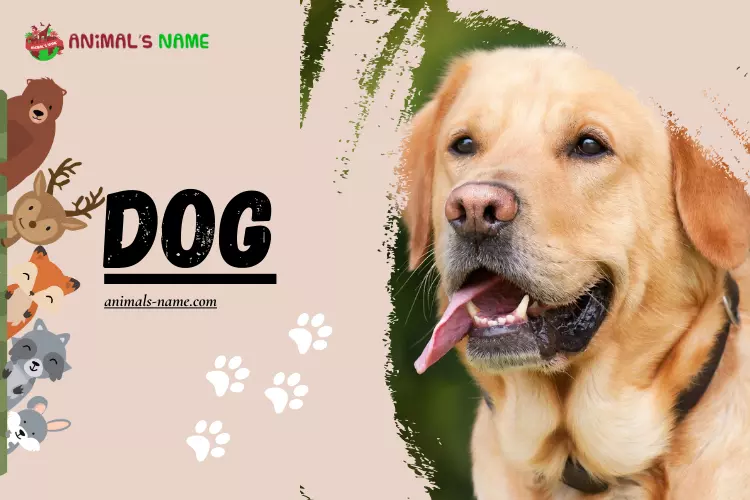Welcome to our blog post on the fascinating world of dogs! Dogs are one of the most beloved and popular pets around the world. They have a rich history, incredible facts, diverse sizes, and various habitats. In this blog post, we will explore these incredible animals’ aspects.
Dogs have been companions to humans for thousands of years. Our ancestors domesticated them to assist in hunting, herding, and providing protection. Throughout history, dogs have played significant roles in our societies, serving as loyal friends, search and rescue partners, and even helping individuals with disabilities. Dogs’ trustworthy and affectionate nature has earned them the title of “man’s best friend.”
Did you know that there are over 340 different dog breeds? These breeds come in all shapes and sizes, from tiny Chihuahuas to majestic Great Danes. Dogs also vary in their habitat preferences. While some dogs thrive in colder climates, others prefer warmer regions. Despite this diversity, dogs share a standard classification as mammals and belong to the Canidae family, including wolves, foxes, and coyotes.
So, get ready to embark on an exciting journey into the world of dogs. Explore their fascinating history, discover mind-boggling facts, delve into the wide range of sizes, and learn about their diverse habitats and classification within the animal kingdom. Get ready to immerse yourself in the beautiful world of these fabulous creatures, the dogs!
History of Dog
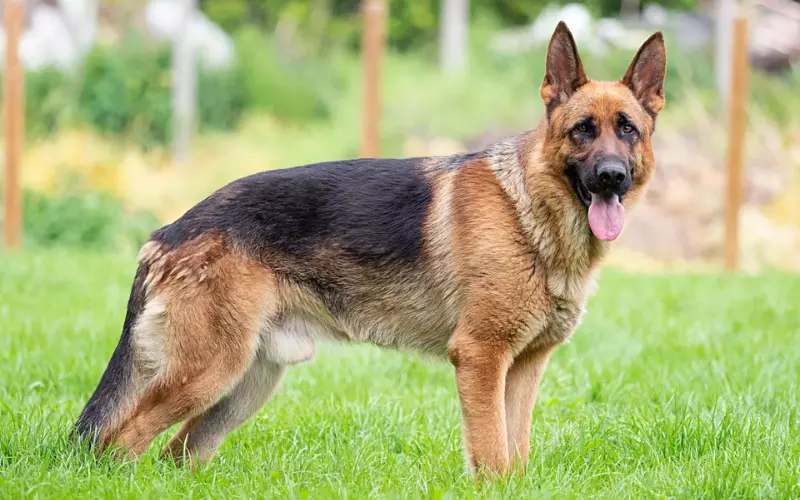
The history of dogs goes back thousands of years. Dogs have been our loyal companions for a very long time. They were not always the domesticated pets we know today. In the beginning, dogs were wild animals.
Thousands of years ago, people lived in caves and hunted for food. They noticed that some wild wolves were hanging around their camps. These wolves were not like the others; they were not afraid. Over time, people and these wolves formed a special bond. People gave them food, and wolves helped them hunt. It was a mutually beneficial relationship. This was the start of humans and dogs becoming friends.
As time passed, humans started to tame and train these wolf descendants. They selected the most helpful, friendly, and easy to train. These dogs became more and more like the pets we know today. They helped humans in many ways, like guarding homes or herding sheep. Dogs were also used for hunting or in wars. They became a part of our families, bringing joy and companionship.
Dogs have a long history with humans. They started as wild wolves but became domesticated over time. They were our companions in hunting and protecting our homes. Dogs have adapted to live with humans and have become our devoted and loving pets. They are man’s best friend.
Importance of Dog

Dogs are incredible animals that play a vital role in our lives. They offer us companionship, protection, and love. Dogs are wonderful pets that can teach us valuable lessons and hold a special place in our hearts.
Firstly, dogs help us feel less lonely. They are known for their loyalty and affection towards their owners. Having a furry friend by your side can be a great comfort, especially in times of sadness or loneliness. Dogs are always there to listen and provide unconditional love, making us feel valued and supported.
Secondly, dogs are excellent protectors. They have a strong sense of hearing and smell, which makes them great alarm systems. They can alert us to any potential danger or intruders, helping to keep our homes and loved ones safe. Dogs also provide a sense of security when we take them for walks or hikes, deterring potential threats and giving us peace of mind.
Finally, dogs provide us with endless joy and happiness. Whether playing fetch in the park or cuddling on the couch, dogs can make us smile and laugh. They bring fun and excitement into our lives, teaching us to enjoy the simple pleasures and live in the present moment.
Dogs are more than just pets. They are loyal companions, protectors, and a source of pure happiness. Their presence in our lives is invaluable, making them essential to our families. Let’s cherish and appreciate these incredible creatures who bring love and joy daily.
Amazing Facts About Dog

1. Dogs are domesticated animals living with humans for thousands of years, providing companionship and various services.
2. There are hundreds of different dog breeds, varying in size, appearance, and temperament.
3. Dogs are known for their exceptional sense of smell, as they have up to 300 million olfactory receptors in their noses, compared to humans’ 6 million.
4. They also have remarkable hearing ability, as dogs can hear sounds at frequencies higher than humans can detect.
5. Dogs communicate through vocalizations (barking, howling) and body language, such as wagging their tails or raising their ears.
6. Canines are social animals and thrive on companionship from humans and other dogs.
7. Training dogs is possible due to their intelligence and quick learning ability. They can understand numerous commands and perform various tasks.
8. Dogs have a strong sense of loyalty and have been known for their bravery and for protecting their human family members.
9. Although known as carnivores, dogs can adapt to a mixed diet, including meat and plant-based foods.
10. Canines display many emotions, including joy, fear, and sadness, which can be observed through facial expressions and body postures.
11. Dogs have a remarkable sense of direction and can find their way home from unfamiliar places.
12. Different breeds have different exercise needs, from energetic breeds that require vigorous daily activities to those that prefer a more relaxed lifestyle.
13. Just like humans, dogs need regular medical check-ups and vaccinations to ensure their health and prevent diseases.
14. Dogs have been used for various purposes throughout history, such as herding livestock, hunting, and assisting people with disabilities.
15. Many dogs enjoy being part of a family and are great with children, offering unconditional love and becoming loyal and devoted companions.
Can we keep a Dog as our Pet?

Keeping a dog as a pet can be a wonderful experience for many people. Dogs are loyal, loving, and great companions. They can bring joy and happiness to our lives. However, having a pet dog is a big responsibility and should be carefully considered.
Firstly, it is essential to understand that dogs require much time, attention, and care. They need to be fed, walked, and groomed regularly. They also need to be taken to the vet for vaccinations and check-ups. Caring for dogs requires commitment and dedication, as they rely on us for their well-being.
Secondly, dogs can be a big financial commitment. They need food, toys, grooming supplies, and medical care. Additionally, there may be unexpected expenses, such as emergency vet visits. Being prepared and having a budget to meet our furry friend’s needs is crucial.
Lastly, we must consider our living situation and whether it suits a dog. Dogs need enough space to move around and play. Living in a small apartment or having limited outdoor space may not be ideal for a dog. It is crucial to provide a safe and comfortable environment for our pets.
While having a dog as a pet can be a rewarding experience, it is essential to consider the responsibilities and commitments it entails carefully. From dedicating time and attention to meeting their financial needs, keeping a dog requires a lot of effort. We should also ensure that our living situation suits a dog before bringing one into our home.
Size of Dog

Dogs come in different shapes and sizes. Some dogs are small, while others are big. It’s fascinating to see how much their size can vary!
Small dogs, also known as toy breeds, are very tiny. They usually weigh less than 10 pounds and stand only a few inches tall. Examples of small dogs include Chihuahuas and Yorkshire Terriers. These little pups are great for people who live in small apartments or houses with limited space. They can easily fit on laps or be carried around in bags. Despite their small size, these dogs have big personalities and energy.
On the other hand, large dogs can weigh over 100 pounds and stand more than two feet tall. Breeds such as Saint Bernards and Great Danes fall into this category. These gentle giants require more space to move around and play. Due to their size, they need a lot of exercise, such as walking or running in a yard. Large dogs are often known for their loyalty and are great for families with ample room for them to roam.
No matter their size, all dogs need love, care, and attention. Whether tiny or enormous, dogs bring joy and companionship to people’s lives. So, whether you prefer a small or a large dog, a furry friend is just waiting to be part of your family!
Habitat of Dog

A dog’s habitat is generally a place where it lives and feels at home. Dogs can have different habitats, but most commonly, they live with humans in warm and comfortable homes. They become a part of the family and enjoy being around their owners. Inside the house, dogs usually have their area, like a cosy bed or crate, where they can rest and feel safe. They also like to explore and play in the backyard or nearby park, stretching their legs and enjoying the outdoors.
Some dogs, like stray or wild dogs, may not have a specific home. They might live in different places, such as streets, parks, or forests. These dogs search for food and shelter wherever they can find it. They may sleep in abandoned buildings or find a cosy spot under a tree. While these dogs don’t have a permanent habitat, they can still adapt and survive in various environments.
No matter where they live, dogs are very adaptable creatures. They can be found in different habitats worldwide, from cities to rural areas and even colder regions. Some breeds of dogs are better suited to certain climates, such as huskies with thick fur to keep them warm in snowy regions. Whether it’s a cosy home or an outdoorsy upbringing, dogs are social animals that thrive in the company of people or other animals.
Overall, a dog’s habitat can vary greatly depending on the situation. Some enjoy the comforts of a loving home with their human companions, while others make do with whatever environment they find themselves in. Dogs bring joy and companionship to our lives no matter where they live, and it’s our responsibility to provide them with a safe and suitable habitat to thrive in.
Classification of Dog

Dogs are amazing and friendly animals that people love having as pets. They come in different shapes, sizes, and colours. Did you know dogs are classified into different groups based on their characteristics and abilities? Let’s learn more about the classification of dogs!
The first group is called sporting dogs. These dogs were initially bred to help hunters. They have lots of energy, love to run and play, and are excellent swimmers. Breeds like Golden Retrievers and Labrador Retrievers belong to this group. Sporting dogs are amiable and make great companions for families who enjoy outdoor activities.
The next group is called working dogs. They are known for their strong muscles and intelligence. Working dogs are often trained to assist humans by doing important jobs. For example, police dogs help catch bad guys, and guide dogs help people who are blind to navigate safely. Breeds like German Shepherds and Rottweilers are part of the working dog group. They are highly obedient and loyal.
The third group is called toy dogs. As the name suggests, these dogs are small in size. They are bred solely for companionship and are usually very affectionate. Toy dogs make great pets for people living in apartments or with limited space. Some popular toy dog breeds include Chihuahuas and Pomeranians.
Dogs are classified based on their main characteristics and abilities. Sporting dogs are energetic and good at outdoor activities. Working dogs are strong and intelligent, often trained for essential tasks. Toy dogs are small and bred for companionship. Regardless of their group, all dogs have one thing in common – their love and loyalty towards their human friends.
Different Types of Dog
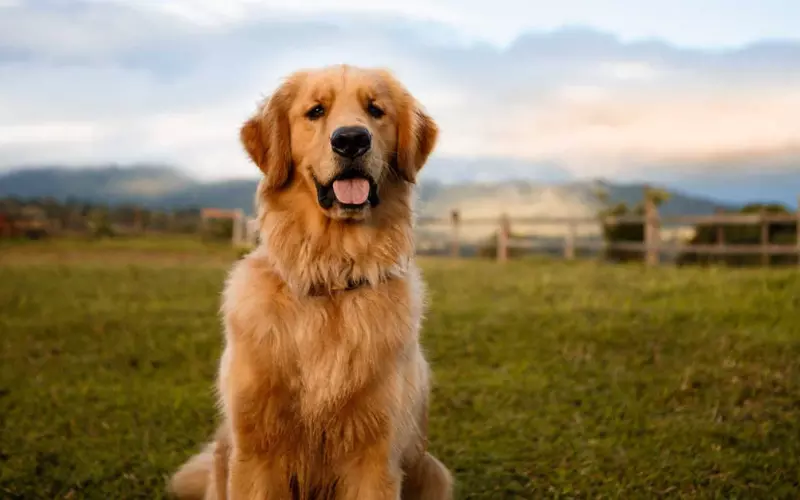
1.Labrador Retriever: Known for their friendly and outgoing nature. They are excellent family dogs and good with children. Labrador Retrievers are also great swimmers and love playing in water.
2. German Shepherd: They are intelligent and highly trainable. German Shepherds are often used as police and search and rescue dogs. They are incredibly loyal and protective of their owners.
3. Golden Retriever: Golden Retrievers are gentle and affectionate dogs. They have an instinct to retrieve objects and are excellent for playing fetch. They are also commonly used as therapy dogs due to their calm and patient nature.
4. Bulldogs: They are known for their distinct and adorable wrinkled faces. Despite their tough exterior, they are generally kind, docile, and friendly. They do not require much exercise and are suitable for apartment living.
5. Poodle: Poodles come in different sizes (standard, miniature, and toy) and coat types (curly and wavy). They are brilliant and easy to train. Poodles are also known for their hypoallergenic coat, making them great for people with allergies.
6. Beagle: Beagles have a friendly and outgoing personality. They are known for their keen sense of smell, which makes them excellent hunting and tracking dogs. Beagles are also friendly and get along well with children and other pets.
7. Rottweiler: Rottweilers are powerful dogs. They are incredibly loyal and protective of their families. With proper training and socialization, they can make loving and gentle companions.
8. Yorkshire Terrier: Yorkshire Terriers, or Yorkies, are small and energetic dogs. They are known for their long and silky coat. Yorkies are suitable for apartment living and for families with older children.
9. French Bulldog: French Bulldogs are a small breed with a big personality. They are affectionate and make great companions. French Bulldogs have unique and adorable “bat ears” and a funny snorting sound due to their short snout.
10. Boxer: Boxers are energetic and playful dogs. They are excellent guard dogs and are protective of their families. Boxers are also known for their friendly and patient nature, making them great with children.
Geographical Presence of Dog

Dogs can be found in many regions around the world. They are the most common pets and are found in homes and communities all over the globe. You will likely find dogs as companions whether you live in Europe, Asia, Africa, the Americas, or Australia.
However, there are certain regions where dogs may not be found. These include places with harsh weather conditions that make it difficult for dogs to survive, such as scorching deserts or freezing polar regions. Additionally, some remote islands or isolated areas may not have any dogs due to limited human presence or restricted access.
Dogs can be found in most regions worldwide, providing companionship and love to people everywhere. They are not restricted to any specific continent or country, as their presence is widespread. While there may be certain regions where dogs are not found, these are exceptions rather than the norm. So, wherever you are in the world, chances are you will encounter a furry friend wagging its tail and ready to be your pal.
Diet of Dog’s
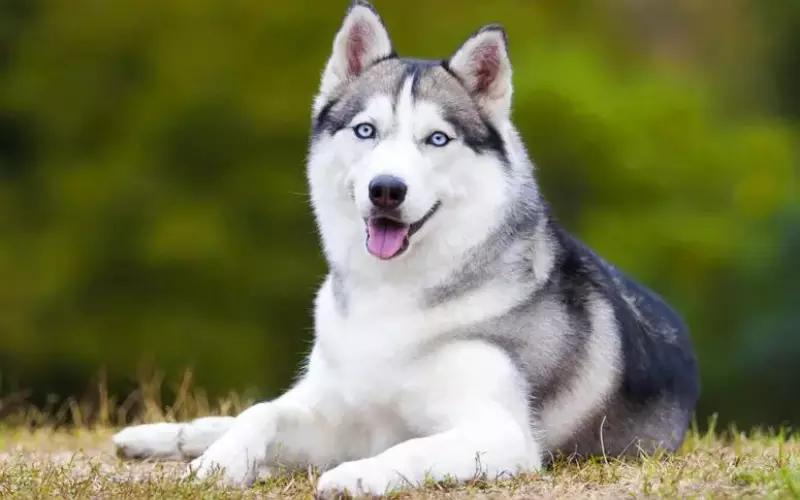
A dog’s diet is essential to keep them healthy and strong. Dogs need a balanced diet, just like humans. They need a combination of proteins, carbohydrates, fats, vitamins, and minerals to stay healthy.
Proteins are very important for dogs, as they help build and repair their muscles. Good sources of protein for dogs include meat, fish, and eggs. Carbohydrates provide dogs energy and can be made from grains like rice and oats. Fats are also necessary for dogs as they provide energy and help absorb specific vitamins. Good sources of fats for dogs include fish oil and chicken fat.
Dogs also need vitamins and minerals to stay healthy. They can get these from fruits and vegetables. Some good fruits and vegetables for dogs include carrots, apples, and sweet potatoes. It is important to note that some human foods, such as chocolate, onions, and grapes, can harm dogs. It is best to avoid feeding these to your furry friend.
A balanced diet is essential for dogs to stay healthy and strong. They need proteins, carbohydrates, fats, vitamins, and minerals to thrive. Feeding them a proper diet and avoiding foods that may harm them is essential. By caring for their diet, we can ensure our furry friends lead a happy and healthy life.
Locomotion of Dogs
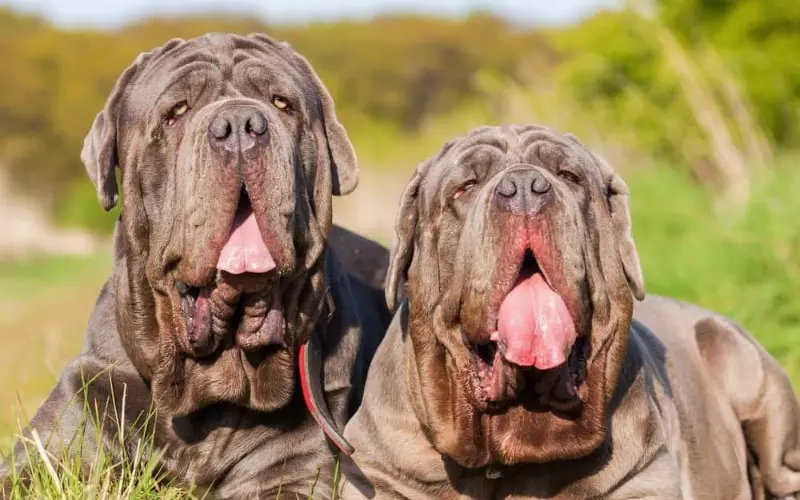
Dogs move in an exciting way called locomotion. They have four legs, which allows them to walk, run, and even jump. When a dog walks, it moves one leg at a time. It puts its front right leg forward, its back right leg, the front left leg, and finally, the back left leg. This helps the dog maintain a steady and balanced walk.
But when dogs start to run, they use a different type of locomotion called the trot. The dog moves its front and back legs in a diagonal pattern in the trot. For example, when the front right leg moves forward, the back left leg moves forward simultaneously. This helps the dog to run faster and cover more ground quickly.
Dogs use locomotion to move around. They walk by moving one leg at a time and run by using a diagonal trotting pattern with their legs. Watching their graceful movements, whether strolling or darting with energy, is incredible.
Social and Sexual Behaviour of Dogs

Dogs are not just cuddly companions; they also have interesting social and sexual behaviours. They are very social animals and form strong bonds with their pack or family, which can include other dogs or even humans. Dogs communicate with each other through body language, barks, and even tail wags. When a dog wags its tail, it can mean it is happy, excited, or wants to play. However, if the tail is tucked between the legs, it can indicate fear or submission.
A critical aspect of a dog’s social behaviour is marking its territory. Dogs have a keen sense of smell and use urine to mark their own areas. By doing this, they are telling other dogs to stay away. Dogs also use scent markings to communicate their reproductive status. Female dogs release pheromones when in heat, signalling to male dogs that they are ready to mate.
When it comes to sexual behaviour, dogs have their unique way of expressing their desires. Female dogs come into heat around twice a year, during which they are receptive to mating. Male dogs become very interested in mating with females and may display increased sniffing, whining, or even jumping on the female. Mating between dogs involves the male mounting the female from behind and inserting his penis into her vagina.
Dogs are social creatures and use various forms of communication to interact with other dogs and humans. They mark their territory through urine and communicate their reproductive status through scent. Regarding mating, dogs display specific behaviours that help them find a mate and reproduce. Understanding these social and sexual behaviours can help us better care for and understand our furry friends.
Reproduction and Lifecycle of Dogs

The reproduction and life cycle of a dog is quite interesting. Dogs are mammals, which means they reproduce by giving birth to live young ones. The process of reproduction starts when a male dog and a female dog mate, which means they come together to make baby dogs. This usually happens when the female dog is in a special part of her cycle called “heat”.
After the male dog mates with the female dog, the female dog’s body goes through changes. She becomes pregnant and carries the puppies inside her body for about two months. This is called the gestation period. During this time, the mother dog takes extra care of herself and eats more food to nourish her growing puppies.
When it’s time for the puppies to be born, the mother dog gives birth to them. Usually, a litter of puppies can be anywhere from one to twelve, depending on the breed of the dog. The puppies are tiny and fragile when they are born. They rely on their mother for everything, including milk for nourishment.
As the puppies grow, they learn new things and become more independent. They start eating solid food and learning how to interact with their environment. They rely on their mother for guidance and protection during this time. Eventually, the puppies grow up and become adult dogs, and the cycle of life continues as they reach reproductive age and have their puppies.
Dogs’ reproduction and life cycle involves mating between a male and a female dog, followed by pregnancy, birth, and the growth of puppies into adult dogs. It is a natural process that ensures the continuation of this beloved animal species.
Threats to Dog’s

Dogs face several threats that can harm them. One of the main threats is accidents. Dogs can get into accidents while running on the road or playing near vehicles. They might get injured or, even worse, get hit by a car, which can be very dangerous for them. Keeping an eye on our dogs and ensuring they are safe by keeping them away from busy roads is essential.
Another threat to dogs is illnesses. Just like humans, dogs can get sick too. They can catch diseases like parvovirus distemper or even get infected with ticks and fleas. These illnesses can make dogs very sick and even cause death if not treated in time. To protect our furry friends from these threats, keeping them up-to-date with vaccinations and regularly taking them to the veterinarian for check-ups is essential.
Lastly, dogs are also at risk of abuse or neglect from humans. Some people might mistreat or abandon their dogs, not providing proper food, shelter, or care. This can lead to malnutrition, illnesses, and severe psychological damage for these innocent animals. Our responsibility is to ensure that dogs are treated with love and care, providing them with a safe and loving home.
Dogs face threats such as accidents, illnesses, and abuse. We must be cautious about their safety by keeping them away from roads and providing them with necessary vaccinations and check-ups. We must be responsible pet owners and treat our dogs with the love and care they deserve.
Conclusion
Overall, dogs are fascinating creatures that have a rich and storied history. They have been our loyal companions for thousands of years and have adapted to various habitats worldwide. Dogs come in all shapes and sizes, from tiny Chihuahuas to massive Great Danes. They are highly adaptable and can thrive in both urban and rural environments. Dogs have also been classified into different breeds based on physical and behavioural traits.
One interesting fact about dogs is that they are not always domesticated. They are descendants of wolves, and it is believed that early humans domesticated them for hunting and protection. Over time, dogs became more than just working animals; they became beloved members of our families. They are known for their loyalty, playfulness, and ability to forge deep emotional connections with humans.
As we wrap up our exploration of this fantastic animal’s name, it is clear that dogs hold a special place in our hearts and homes. They bring us joy, companionship, and unconditional love. Whether it’s a long walk in the park, a game of fetch, or simply cuddling on the couch, dogs enrich our lives in countless ways. So remember to always cherish and care for these incredible creatures, for they truly are man’s best friend.
FAQ’s
What is a dog?
A dog is a domesticated carnivorous mammal from the Canidae family.
What are the different breeds of dogs?
There are hundreds of dog breeds, including popular ones such as Labrador Retrievers, German Shepherds, and Golden Retrievers.
How long do dogs usually live?
The average lifespan of a dog is around 10 to 13 years, although some dogs can live longer.
What kind of food should I feed my dog?
Dogs require a balanced diet with proteins, fats, carbohydrates, vitamins, and minerals. It’s best to consult with a veterinarian to determine the specific dietary needs of your dog.
How often should I walk my dog?
Dogs should be walked daily to get enough exercise and mental stimulation. The duration and intensity of the walk may vary depending on the dog’s breed, age, and health.
Are dogs social animals?
Yes, dogs are highly social animals and often thrive in the company of humans and other dogs. They can form strong bonds with their owners and enjoy socializing with other dogs.
Do dogs require training?
Yes, training is essential for dogs to learn basic commands proper behavior, and to develop a strong bond with their owners. Training can also help prevent behavioural issues.
How often should I groom my dog?
The grooming frequency depends on the type of dog and its coat. Some dogs require regular brushing, while others need professional grooming services. Regular nail trimming and dental care are also necessary.
How often should I take my dog to the veterinarian?
Dogs should receive regular veterinary check-ups at least once a year. Puppies and senior dogs may need more frequent visits to manage their specific health needs.
Can dogs be left alone for long periods?
Dogs are social animals and generally do not cope with prolonged periods of being alone. They may develop separation anxiety or exhibit destructive behaviours if left alone for too long. It’s essential to provide them with companionship and mental stimulation.
What vaccinations do dogs need?
Dogs require core vaccinations, such as rabies, distemper, parvovirus, and hepatitis. The vaccines needed may vary based on the dog’s age, health, and lifestyle.
How can I socialize my dog?
Socializing dogs involves exposing them to various people, animals, and situations in a positive and controlled manner. Puppy socialization classes and supervised interactions can help dogs become well-adjusted and confident.
Are dogs good with children?
Many dogs are excellent companions for children and can form strong bonds with them. However, supervision and teaching children how to interact with dogs respectfully are crucial to ensure safety for both.
How can I train my dog to stop barking excessively?
Excessive barking can be addressed through consistent training and positive reinforcement. Identifying the underlying cause of the barking is essential in order to modify the behaviour effectively.
Can dogs understand human emotions?
Dogs are known for their ability to perceive human emotions. They can often pick up on subtle cues and display empathy towards their owners when they are happy, sad, or stressed.

Hi there! I’m Morgan Gutierrez, and I love animals! I work as a Seasonal Animal Care Specialist at Brookfield Zoo and also teach people about animals, which is super fun. I studied at Valparaiso University in Lockport, Illinois, where I learned even more about these amazing creatures.
I’m not just about taking care of animals; I write articles about them, too! I explore and share many interesting animal stories, from cute kittens to giant elephants.
In the past, I’ve worked with veterinarians, helped with research, and even been an Animal Ambassador, bringing animals closer to people. Animals are my passion, and I enjoy helping others learn about them. So, if you ever want to know about animals, feel free to ask. I’ll explain it in a way that’s easy to understand, just like talking to a friend!

